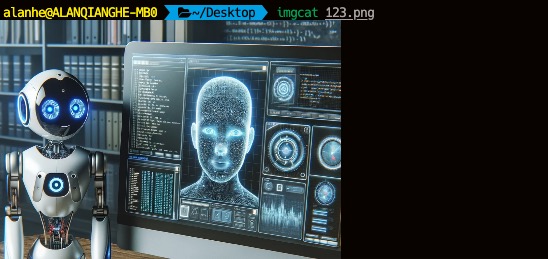Can a terminal display images? Yes. Here’s a summary of how to display images in xterm.js.
Result


Implementation
Server side
Using a Mac as the target server for installing libraries:
# sixel protocol
brew install libsixel
# imgcat can also be installed via iTerm2’s Shell integration package
brew install eddieantonio/eddieantonio/imgcat
WebShell
Frontend setup is straightforward: load @xterm/addon-image.
Note: @xterm/addon-image is an official xterm addon.
npm install --save @xterm/addon-image
const customSettings = {
enableSizeReports: true, // whether to enable CSI t reports (see below)
pixelLimit: 16777216, // max. pixel size of a single image
sixelSupport: true, // enable sixel support
sixelScrolling: true, // whether to scroll on image output
sixelPaletteLimit: 256, // initial sixel palette size
sixelSizeLimit: 25000000, // size limit of a single sixel sequence
storageLimit: 128, // FIFO storage limit in MB
showPlaceholder: true, // whether to show a placeholder for evicted images
iipSupport: true, // enable iTerm IIP support
iipSizeLimit: 20000000 // size limit of a single IIP sequence
}
const imageAddon = new ImageAddon.ImageAddon(customSettings);
term.loadAddon(imageAddon);
When the image addon isn’t loaded
If WebShell doesn’t load the ImageAddon, the output looks like this. The image data is wrapped in escape sequences, so it won’t render in the terminal by default.

Final Thoughts
With this, WebShell can display images in the terminal. As for the actual value of showing images in a terminal—that depends on your design and use cases.

